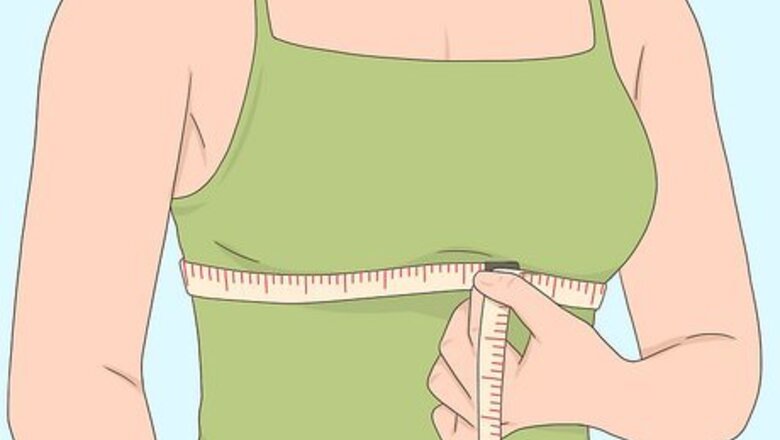
views
- Measure your band size by running a tape measure around your rib cage. Determine your cup size by measuring your torso and subtracting that number from your band size.
- Be aware that different breast shapes look best in specific types of bras. Wear balconette bras if you have shallow breasts or underwire bras if you have pendulous breasts.
- Wear a fitted t-shirt to check what kind of silhouette your bra gives you and to ensure that it's actually figure-flattering.
Calculating Your Size
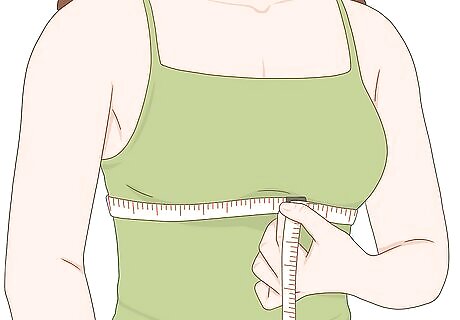
Measure your band size by wrapping a tape measure around your rib cage. Run the tape measure just underneath your breasts. Make sure the tape measure is horizontal and fairly snug. Look at where the ends of the tape measure meet and check the measurement in inches. Write down this number. If the measurement is an odd number, try out bras one inch below and one inch above your measurement. For example, if you measured 31 inches (78.7 cm), your band size could be 30 or 32. If your measurement is an even number, then that’s usually your exact band size.
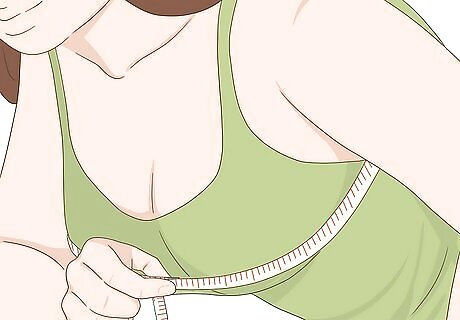
Measure your bust, including your breasts. Bend over so that your chest is parallel to the ground: this allows you to measure all your breast tissue. Wrap a tape measure around your torso so it’s over the fullest part of your breasts. Make sure it’s tight enough to stay in place without digging into your skin. Write down the number.
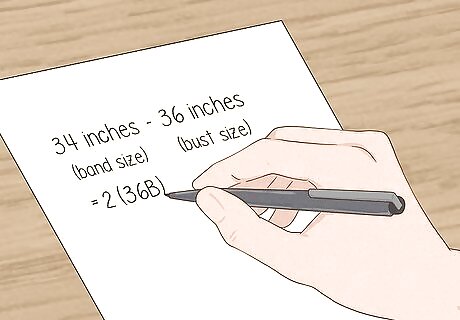
Determine your cup size by subtracting your band size from your bust size. After you’ve figured out your band size and your chest size and write both numbers down, find the difference between the 2 measurements. That number determines your cup size, which is notated as a corresponding letter (or set of letters). Your bra size, then, is your band size plus your cup size—for instance, 36B or 42C. Cup sizes are noted on bras according to the following chart: Less than 1 inch (2.5 cm) = AA 1 inch (2.5 cm) = A 2 inches (5 cm) = B 3 inches (7.5 cm) = C 4 inches (10 cm) = D 5 inches (12.5 cm) = DD 6 inches (15 cm) = DDD (E in UK sizing) 7 inches (18 cm) = DDDD/F (F in UK sizing) 8 inches (20.5 cm) = G/H (FF in UK sizing) 9 inches (23 cm) = I/J (G in UK sizing) 10 inches (25.5 cm) = J (GG in UK sizing) The majority of leading brands use UK cup sizing: AA, A, B, C, D, DD, E, F, FF, G, GG, H, HH, J, JJ, K, KK, L, LL. If you're shopping in the US you might see cup sizes such as DDD or DDDD. These are equivalent to E and F. If you're in any doubt, particularly with larger cup sizes, refer to an international bra sizing chart.
Sizing Basics
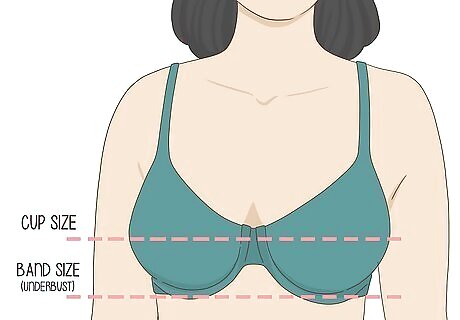
Remember that cup size is proportional to band size. One of the biggest myths is that a D cup looks the same on every band size, or that having small breasts automatically means you’re an A cup. The cup size—or letter—of your bra measurement is determined by the difference between your underbust and bust measurements. For instance, a 32D will fill out less volume than a 36D, even if they’re both D cups. A 32D would mean that you have a 32-inch underbust and a 36-inch bust. A 32A would mean you have a 32-inch underbust and a 33-inch bust.

Look for a bra that supports your breast shape. You might be wondering: what happens if you find a bra in the right size, but it still fits wrong? You probably need the right bra cut for your breast shape. Shallow breasts fit best in balconette or demi-cup bras, while pendulous or tuberous breasts fit best in underwire bras.
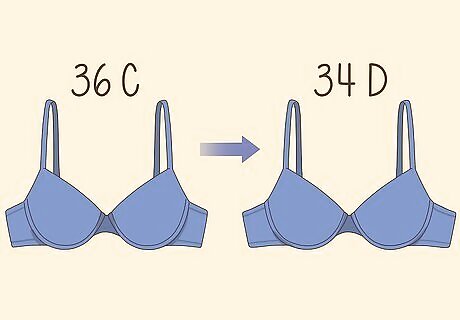
Consider sister sizes for a more perfect fit. If you find a bra that’s close to a perfect fit, try a “sister size,” which may be even more comfortable. To go down a sister size, reduce your band size by 2 and take your cup size up 1 interval. To go up a sister size, increase your band size by 2 but go down 1 interval. For example, if you’re a 36C and go down a sister size, you’d be a 34D. If you are a 36C and go up a sister size, you’d be a 38B.
Checking for Fit
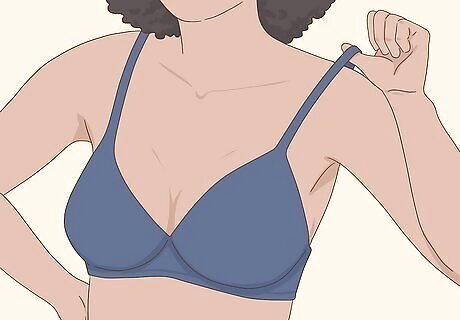
Put the bra on straps-first, then scoop your breasts and hook the clasps. This is sometimes known as the “scoop and swoop” method: put your arms through the shoulder straps and lean forward, so your breasts fall into the cups. Fasten the bra using the hooks and eyes. While you’re still leaning forward, hold the underwires and give them a wiggle to make sure your breasts are settled comfortably into the cups. Slip your hand into the side of each cup and lift the breast toward the cup’s center. You may have to adjust the length of the shoulder straps. Adjust the sliders so the straps are short enough to stay in place without digging into your skin. Lots of people clasp the bra in front and then spin it around before putting on the straps. This is an easier method, but it can wear out the band more quickly. If you struggle to hook your bra from the back, compromise by hooking it on the side of your torso.
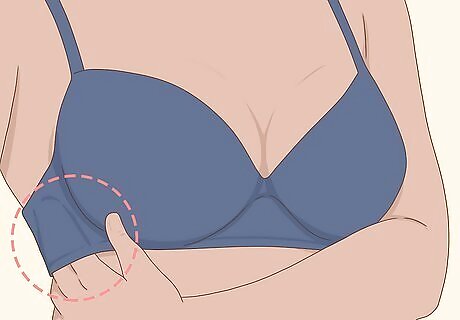
Check the band size. Run 1-2 fingers around the inside of the band. The ideal bra will fit on the biggest adjustment (that is, the loosest hook) but be too tight if you fasten it on the smallest size (the tightest hook). Bras are designed to fit like this so that you can tighten the band as the elastic starts to wear out. If the band on a new bra is roomy enough for you to comfortably fasten it on the tightest adjustment, try a smaller band. For example, if a 32D is too loose, try going down a band size to a 30DD. If the band is painfully tight, try going up a cup size: for instance, go from a 28G to a 30FF.

Check the cup size. If you have the correct cup size, your cups will be completely filled out; none of the fabric will wrinkle, and there won’t be any space in the cups. If there’s any spillage outside the cups or the appearance of a “double boob,” it’s a sign that the cup size is too small. Adjust your bra so the underwire sits on your ribs. If the underwires press into your breastbone, try a “plunge” style bra. Make sure you don’t have any armpit rolls or back rolls. In an ideal bra, the gore—the part of your bra band between the cups—will sit flat against your chest without digging into your skin.

See how your bra looks with your top on. So, you found the perfect bra—now it’s time to see what it does for your figure! Make sure your bra creates smooth lines underneath fitted clothes. Wear a fitted t-shirt and check that there aren’t any bulges of skin spilling out of your cups or the band. Stand in front of a mirror and turn to the side; make sure your bust is about halfway between your elbow and shoulder. If the color of your bra shows through a thin or light colored top, purchase a bra with seamless cups that match your skin color. Going bare-shouldered? Try a strapless bra. As long as you’ve got your band size figured out, you can find a strapless bra that works for you. Aim for one with silicone grips in the sides for extra support.











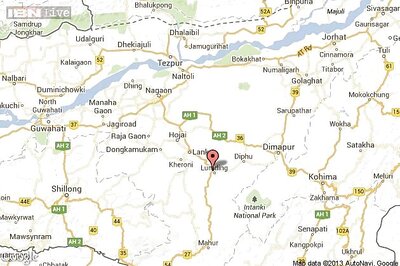

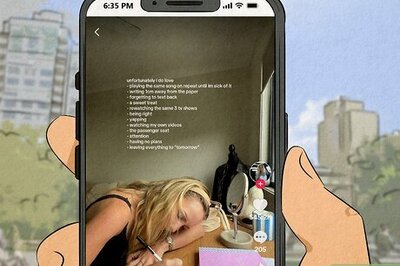

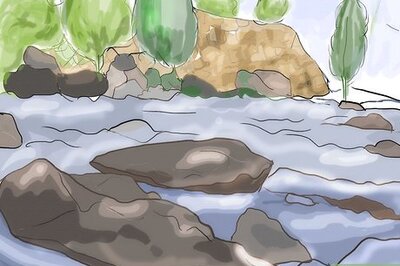
Comments
0 comment